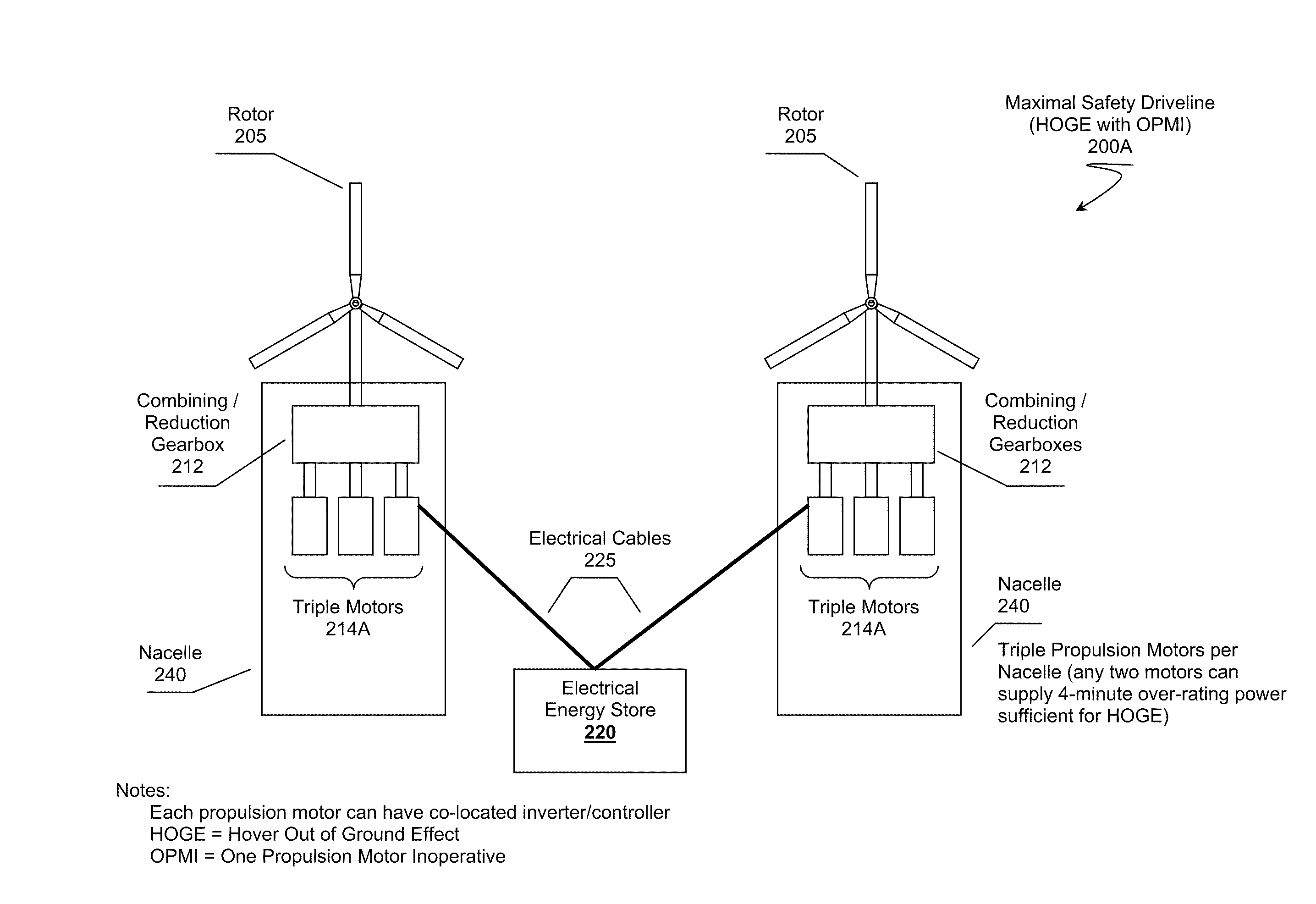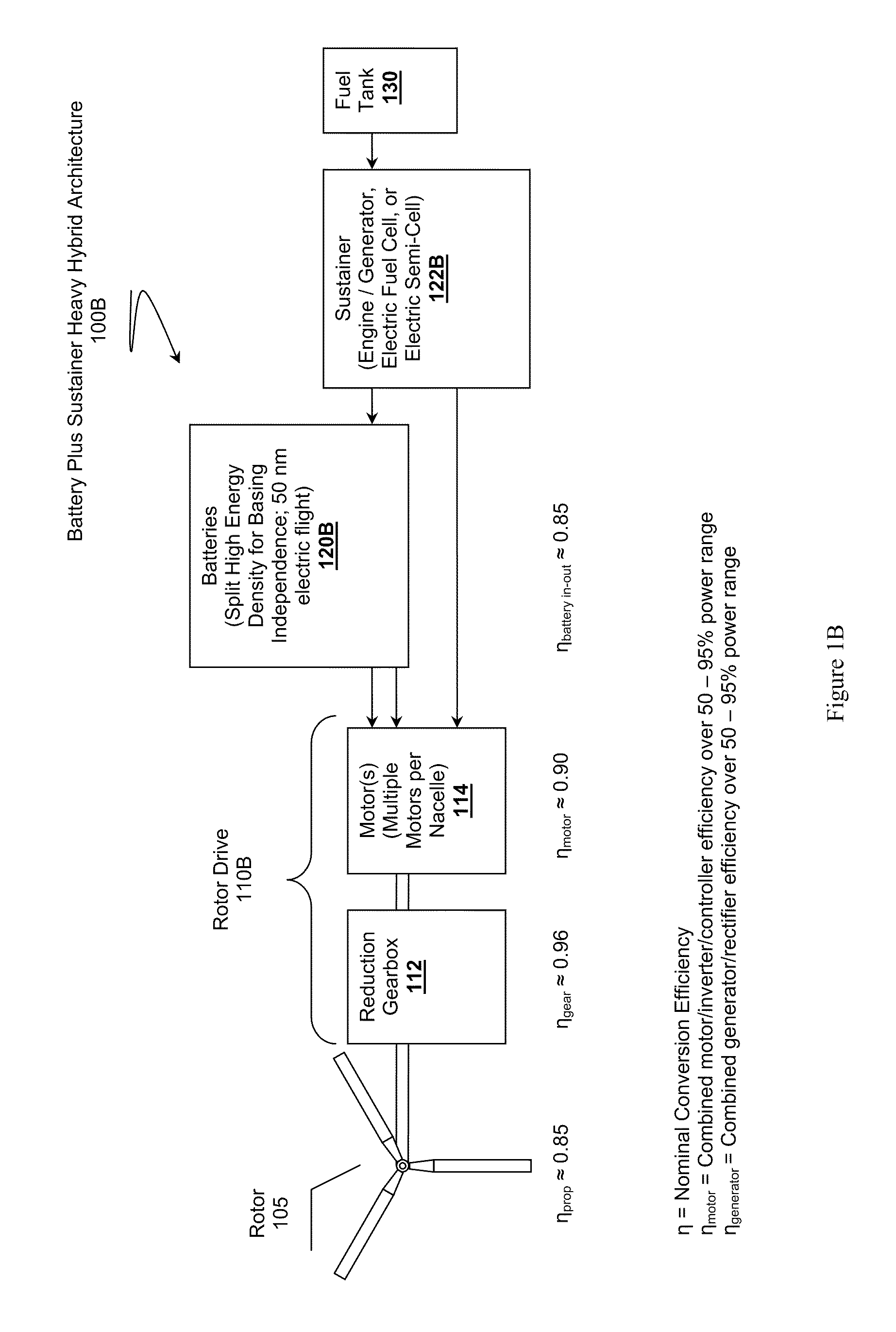Purebred and Hybrid Electric VTOL Tilt Rotor Aircraft
a technology of tilt rotor aircraft and electric motor, which is applied in the direction of vertical landing/take-off aircraft, aircraft navigation control, transportation and packaging, etc., can solve the problems of low propulsion efficiency, compromising safety in built-up areas, and current rotary-wing vtols, except for very advanced tilt rotor aircraft,
- Summary
- Abstract
- Description
- Claims
- Application Information
AI Technical Summary
Benefits of technology
Problems solved by technology
Method used
Image
Examples
Embodiment Construction
The present inventive subject matter is drawn to systems, configurations, and methods of providing numerous advances to VTOL tilt-rotor aircraft, especially electrically driven VTOL (E-VTOL).
The disclosed subject exploits advanced electric propulsion in concert with highly efficient, autonomously piloted with pilot override Vertical Take-Off and Landing (VTOL) tilt-rotor aircraft to radically expand the safe, legal, and practical ingress, egress, and basing into, out of or within populated, built-up locales, and to achieve speeds and ranges competitive with current fixed wing, propeller-driven aircraft of the same payload class. While less efficient rotary wing aircraft (e.g., helicopters and compounds) also benefit from the electric propulsion in terms of safety and legality (e.g., noise or exhaust emissions requirements), their innately lower lift-to-drag ratios prevent them from competing with fixed-wing, propeller-driven aircraft in speed and range.
Understanding the Concept
The i...
PUM
 Login to View More
Login to View More Abstract
Description
Claims
Application Information
 Login to View More
Login to View More - R&D
- Intellectual Property
- Life Sciences
- Materials
- Tech Scout
- Unparalleled Data Quality
- Higher Quality Content
- 60% Fewer Hallucinations
Browse by: Latest US Patents, China's latest patents, Technical Efficacy Thesaurus, Application Domain, Technology Topic, Popular Technical Reports.
© 2025 PatSnap. All rights reserved.Legal|Privacy policy|Modern Slavery Act Transparency Statement|Sitemap|About US| Contact US: help@patsnap.com



